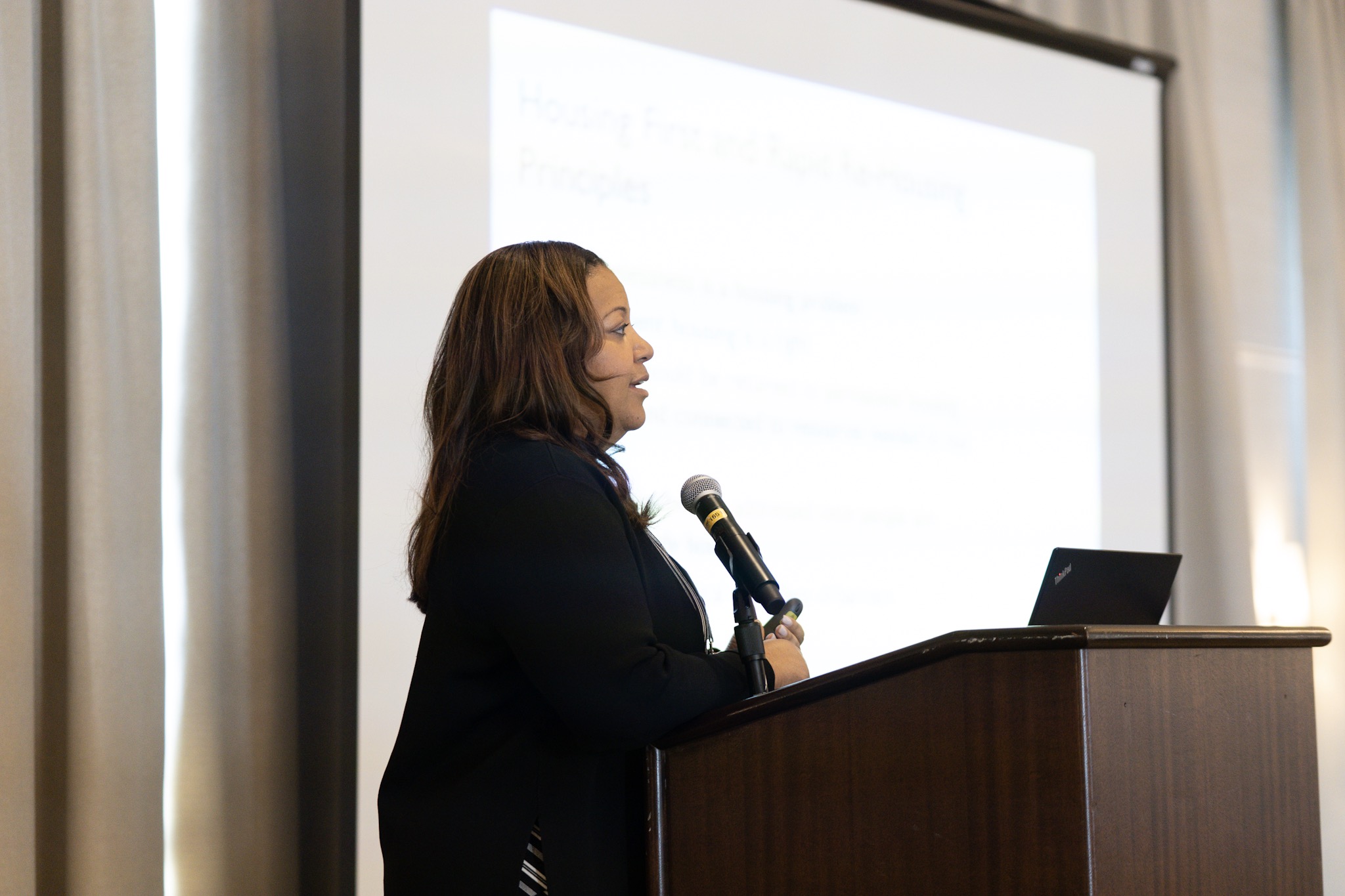The rapid rehousing of people experiencing homelessness has proven to be a successful strategy for people experiencing personal challenges such as limited income, substance abuse or disability, an expert told a group of housing professionals at the recent Connections conference held by the Louisiana Housing Corporation.
Rapid rehousing is a relatively new strategy that aims to quickly end a person’s homelessness by helping them find and move into a home in their community. “Permanent housing is a right and people should be returned to permanent housing quickly and connected to the resources they need to stay there,” says Michele Williams, a Washington D.C.-based consultant who helps organizations improve their outreach strategies, with a specific focus on rapid rehousing.
Williams, who previously served as Chief of System Integration for the Community Partnership for the Prevention of Homelessness, says once people are back in housing, they are in a better position to address other challenges that they may have such as employment, health issues, mental health challenges or substance abuse. “Operating from a stable base helps people deal with those other things,” she says.
The rapid rehousing effort dates back to 2009, when the American Recovery and Reinvestment Act was signed into law, providing $1.5 billion for a program called the Homelessness Prevention and Rapid Re-Housing Program. The strategy has proven widely successful, prompting public and private housing professionals across the nation to adopt similar strategies.
Williams says the results are clear nationally: Families are homeless for less time when they are rapidly rehoused, the cost of housing that person declines, and it increases the likelihood that they will stay housed in the future. “It’s been found that (rapid rehousing) works for everyone,” Williams says. “It’s for veterans, it’s for the youth and for families and individuals.”
Williams says the core components of a rapid rehousing program are housing identification, flexible financial assistance and case management. Williams says successful rapid rehousing interventions are underpinned by a number of basic ideas.
- Homelessness is caused by a crisis. Even though people have additional challenges and service needs, the majority of people become homeless due to a financial crisis or another type of crisis. “If we get them back into permanent housing, we’re able to address those barriers,” Williams says. The goal, she says, is to help people return to housing and be independent in that housing as quickly as possible. She also stresses that most of the people who are considered for rapid rehousing are not very different from other low-income households in a community. They may just need a few additional resources.
- Remaining homeless for a long time can have a significant impact on both adults and children. “The longer they remain homeless, the poorer their outcomes will be in a lot of areas,” she says. Studies have found that experiencing homelessness can negatively impact how children perform in school, a well as their brain development and problem-solving skills. She says the faster housing professionals can get a family back to stability, the better it will be for all members of that household.
- You can’t deliver everything to everybody. Williams says housing advocates and social workers need to understand that they won’t be able to solve every challenge that their clients are experiencing — but they can help them secure housing. “We need to focus on what we’re good at — helping people connect to the right resources that will assist them in the ways we can’t,” she says.
- Focus on housing first. Rapid rehousing is a housing-first intervention, Williams says, meaning it helps people access housing right away without preconditions such as sobriety, steady income, mental health treatment status or criminal backgrounds. When people are experiencing homelessness they are experiencing a crisis, which will elicit a stress response that can cloud thinking and judgment, she says. “Until a person’s survival and safety needs are met, that will drive their behavior,” she says. Providing housing immediately can help end that stress response and allow people to focus on larger life challenges they may be experiencing.
- Homelessness is a housing problem, not a character problem. “No one deserves to be homeless,” Williams says. “It’s not something that person necessarily did or caused. People make bad choices and those choices have (consequences). But the homelessness is resolved by housing. I can still have substance use disorder and be in housing, I can still have mental health challenges and have housing, I can still be low-income and be in housing.”



No Comments Yet
Let us know what you think